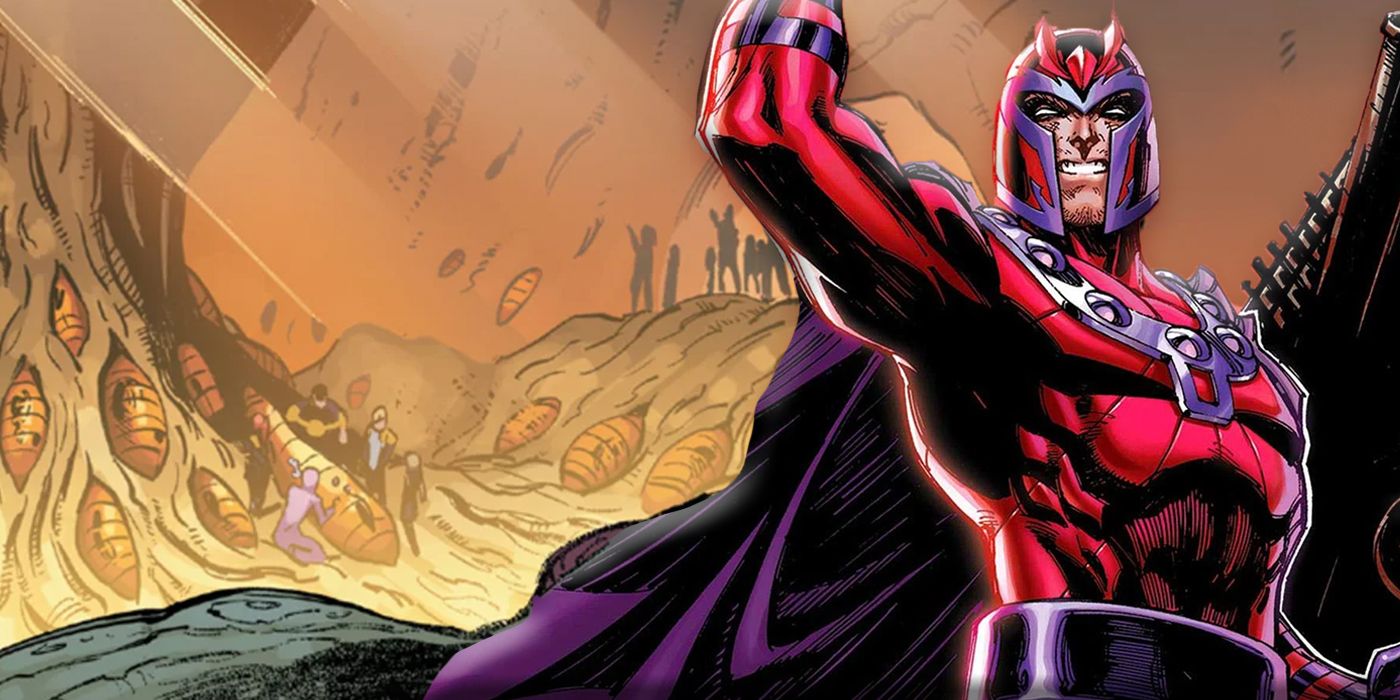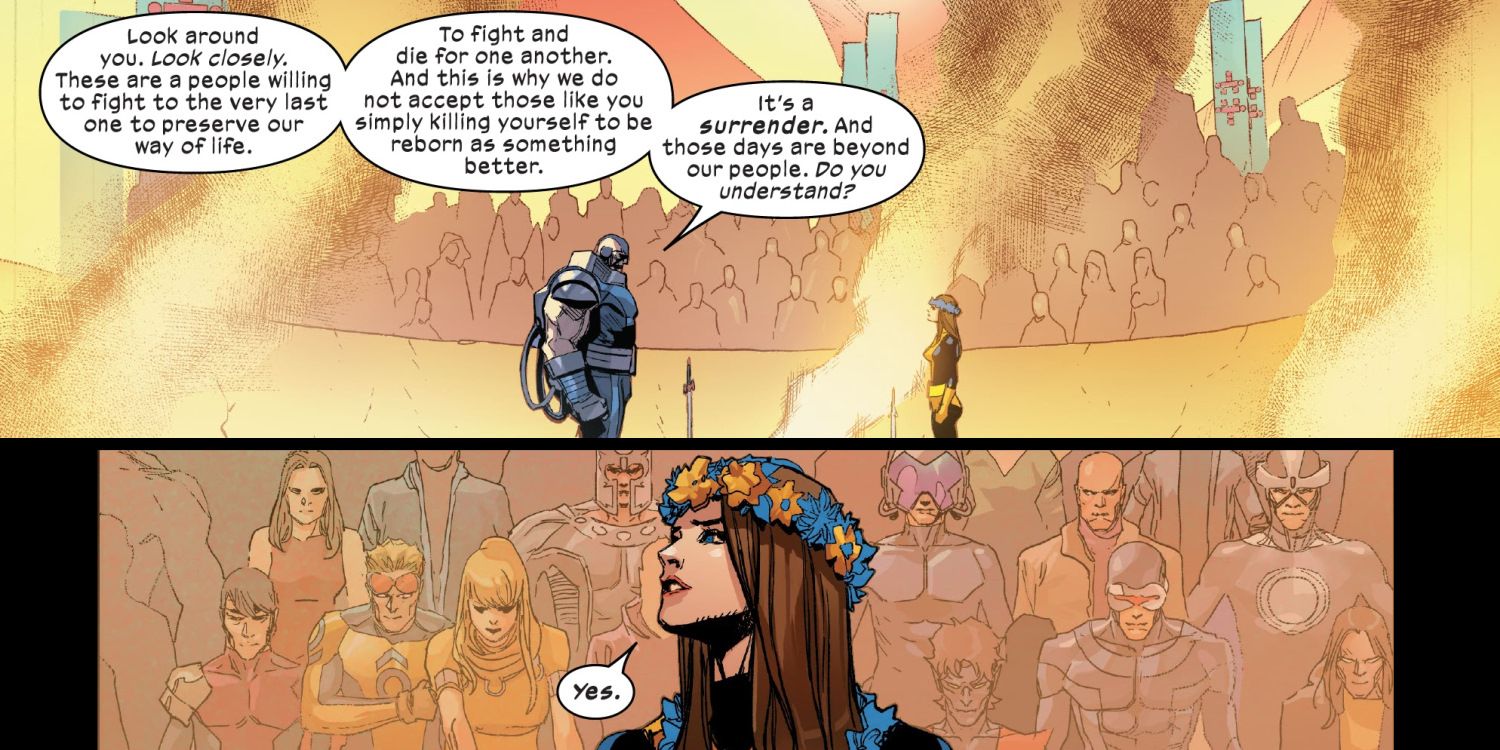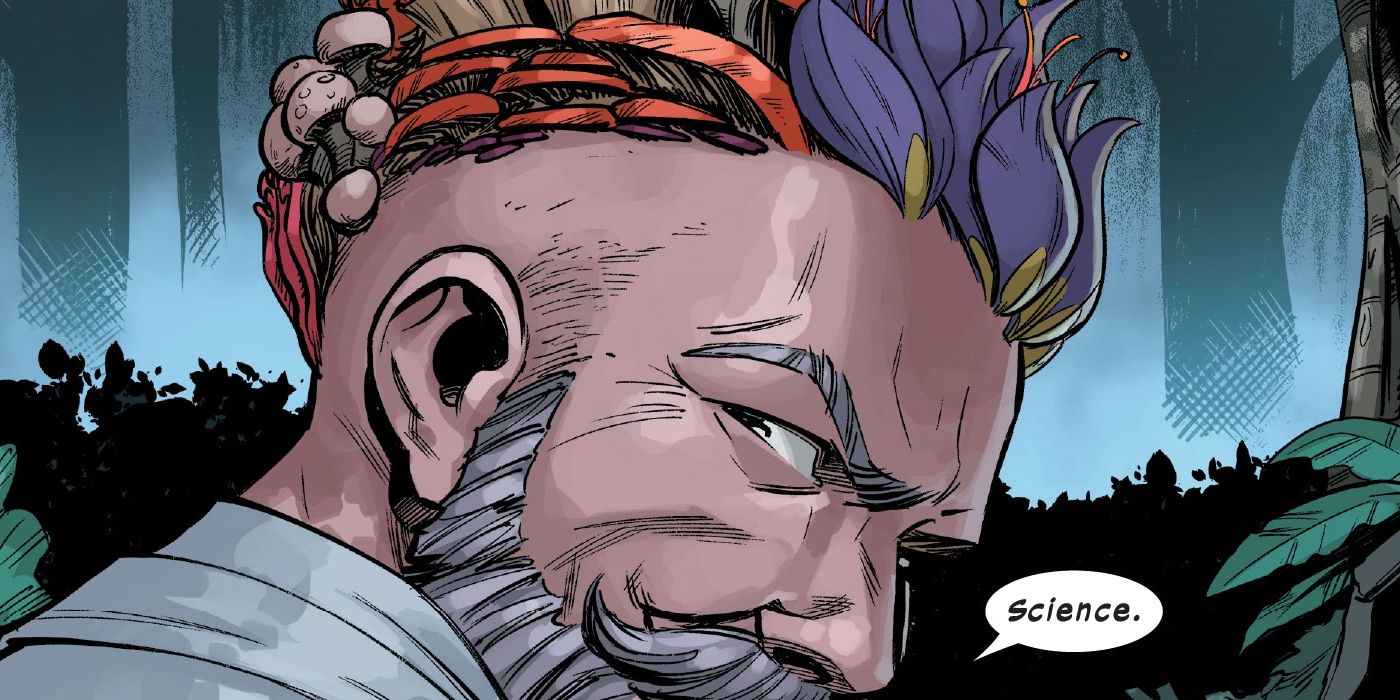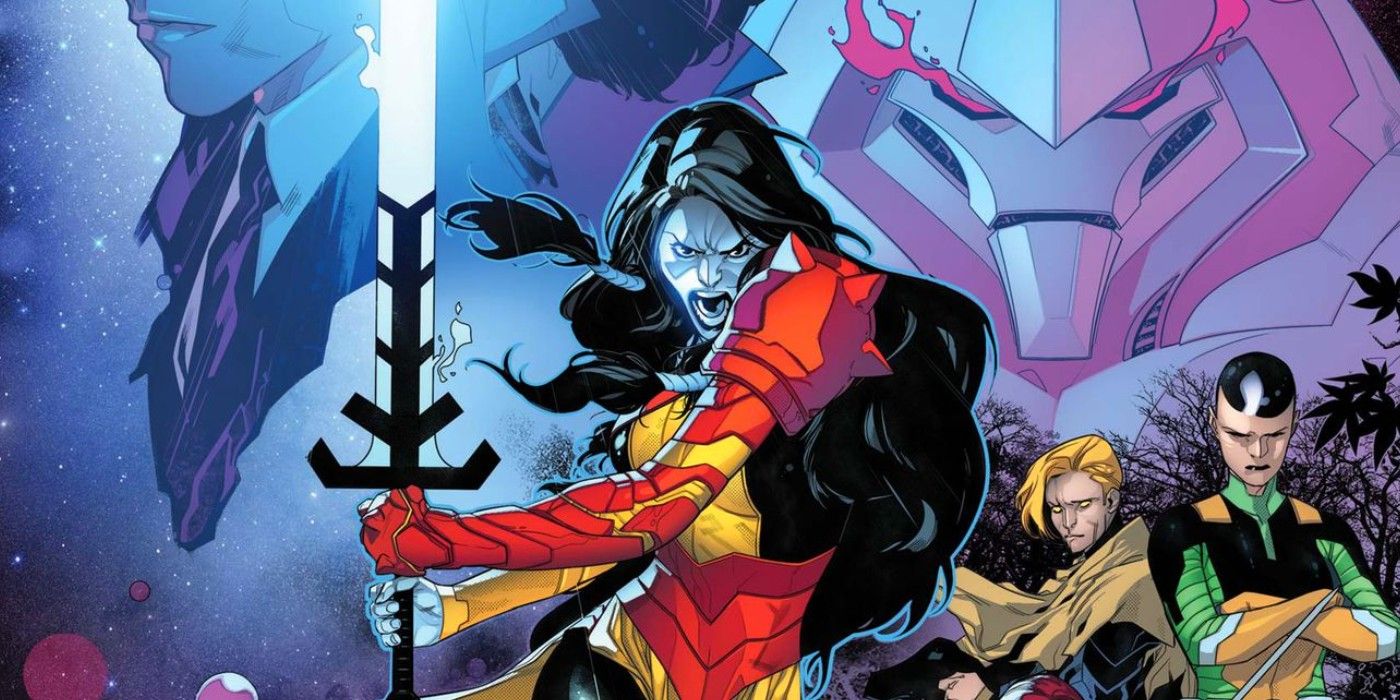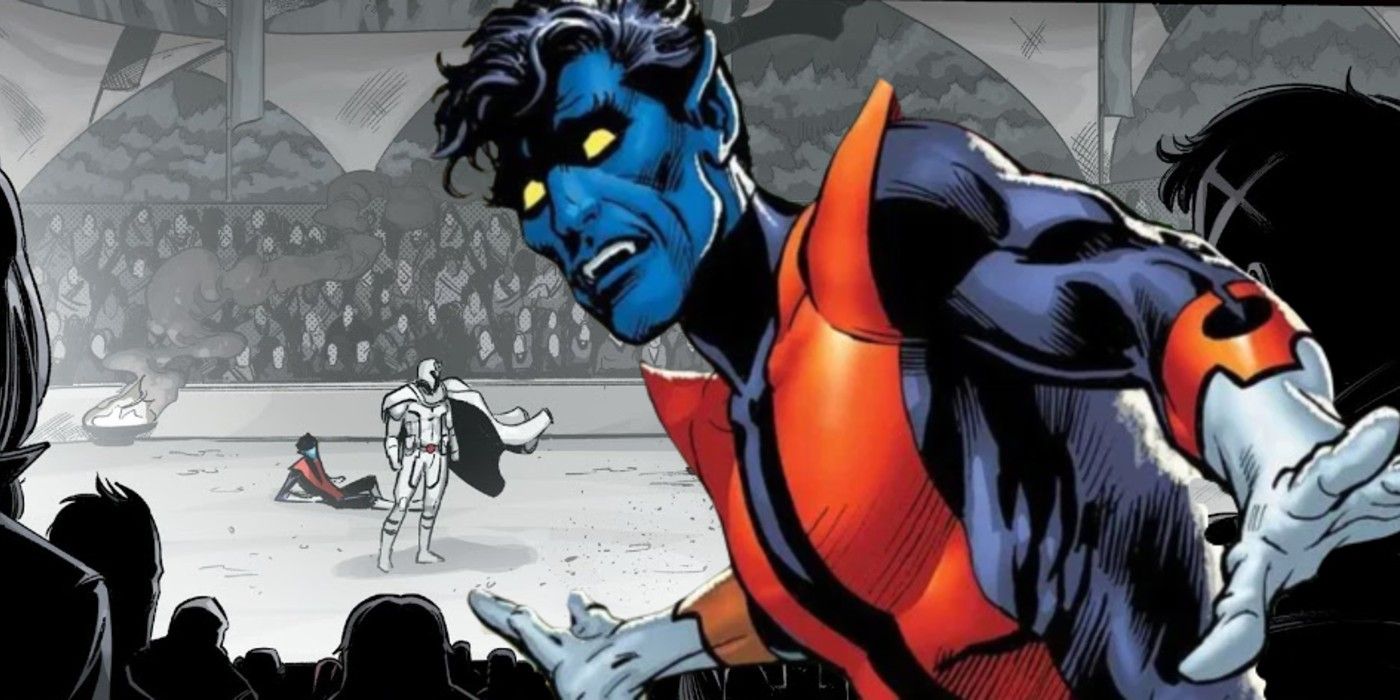Warning: spoilers for Way of X #1 by Si Spurrier, Bob Quinn, Java Tartaglia, and VC's Clayton Cowles are ahead.
The island of Krakoa has offered the X-Men an unprecedented level of autonomy over their lives, one that Magneto has been quick to take advantage of. This is most apparent in the role that resurrection has played in bringing back fallen mutants from the dead, making Krakoa the first post-mortal society on Earth in Marvel Comics. And while resurrection has allowed mutants to escape the horrifying finality of death that has made their experience in human society so difficult, its application in Krakoa has contributed to a bloody and borderline barbaric culture that celebrates violence through a ritual called the Crucible.
The Crucible is a gladiator-inspired event where mutants who had previously lost their powers from Scarlet Witch (Wanda Maximoff) during the House of M event fight against an opponent of their choosing. Their chosen opponent is responsible for killing them so that they can be resurrected back into bodies with the mutant X-gene, allowing them to regain their powers. And while it was originally overseen by Apocalypse, the Crucible is now presided over by Magneto, who seems to have an ulterior stake in the ritual itself, as seen in Way of X #1 (written by Si Spurrier, art by Bob Quinn, colors by Java Tartaglia, letters by VC's Clayton Cowles, and design by Tom Muller).
What is significant about the Crucible is that those who die in combat are resurrected earlier by the Five than those who did not. This is evidence of preferential treatment given to mutants who are more trigger-happy than others, as peaceful mutants can languish in the resurrection queue for several years, if not more, before it is finally their turn to rejoin the living. But for Magneto, the institution of the Crucible on Krakoa signifies a bigger and brighter future for mutantkind, one where mutants can reach their greatest evolutionary potential by first prioritizing combative traits.
The potential for the Crucible to pave the way for a dangerous future for mutantkind has not been lost on Doctor Nemesis, who shared his observations with a horrified Nightcrawler in Way of X #1. However, Doctor Nemesis welcomes the Crucible as an opportunity for Krakoa to fine-tune the genetic diversity in its population because of one specific caveat. Once resurrected, the combative mutants who died in the Crucible have a chance to reproduce with each other ahead of peaceful mutants who are just waiting to be resurrected first. For Doctor Nemesis, the Crucible could have a powerful bearing on what the future of Krakoa could look like, leaving him the chance to advance his own scientific agenda on the island. On the other hand, Magneto sees the Crucible as yet another opportunity to prove mutant superiority and strength, as the ultimate example of how Krakoa is a post-mortal society.
Mutants Like Magneto Came To Krakoa With Their Own Agendas.
Even though Krakoa is meant to be a haven for all mutants, the Crucible shows how there are certain people who stand to gain from the island's emergent culture. Despite the fact that the goal of Krakoa is mutant unity and prosperity, it does not remove the fact that the mutants who live there all came with their own personal baggage, biases, and objectives, whether they be benign or malicious. With the island in its nascent stage, both culturally and socially, it is especially vulnerable right now to be influenced by people with sinister ulterior motives.
Magneto seizing the opportunity of the Crucible is a perfect example of this. Scarlet Witch's Decimation event from House of M undoubtedly left a profound effect on him as he saw hordes of mutants, including himself, become de-powered at once. His enthusiasm for the Crucible could partially stem from a desire to see Scarlet Witch's work undone. Beyond his own ideological crusade, Magneto has a personal stake in overseeing the Crucible, as it is ultimately an effective, if violent, way of giving de-powered mutants their powers back.
For Magneto, Mutant Evolution Fulfills The Ultimate Promise Of Krakoa.
Resurrection has given mutants full control over life and death on Krakoa. In Magneto's eyes, this makes mutants gods over their own fates and futures. But with his control over the Crucible, Magneto takes this a step further by having a direct hand in forming the next generation of life on Krakoa. By ushering in the popularity of the Crucible as a ritual, Magneto sets the stage for a warlike culture on Krakoa, evident in the specific traits that get passed down to the next generation. Beyond just overcoming the finality of death, Magneto has proven how mutants have become their own gods by genetically engineering their own population.
The natural progression of this culture could lead to the creation of Chimera mutants on Krakoa, or mutants created from the DNA of several different mutants. As a result, the Chimera have a combination of different powers. And as Powers of X #1 showed, Chimera mutants are a facet of future life on Krakoa, and their creation will inevitably lead to its fall (written by Jonathan Hickman, art by R.B. Silva, inks by R.B. Silva and Adriano Di Benedetto, colors by Marte Gracia, letters by VC's Clayton Cowles, and design by Tom Muller). Seeing that the New Mutants are already experimenting with coalescing their different power-sets together, it seems that the reality of Chimeras isn't too far off.
While Krakoa has offered a promising new start for all of mutantkind, it remains vulnerable to becoming a victim of its own idealism. By presenting itself as a home to any and all mutants, Krakoa attracted ideologically-diverse groups without first devising a way to accommodate their differences. This has led to a troubling, emergent reality where the island's resurrection capabilities are being used to genetically engineer its own future.
Still, there are some individuals on Krakoa, such as Nightcrawler, who see the dangers that the application of the Crucible poses. As an older mutant, Nightcrawler poses a sense of perspective towards Krakoa's dangers that most of the younger mutants simply do not have, making him especially important in bringing attention to the concerning ramifications of the Crucible. For the sake of Krakoa's future, one can only hope that Nightcrawler will be able to expose the truth of Magneto's plans before Krakoa succumbs to its own idealism.

